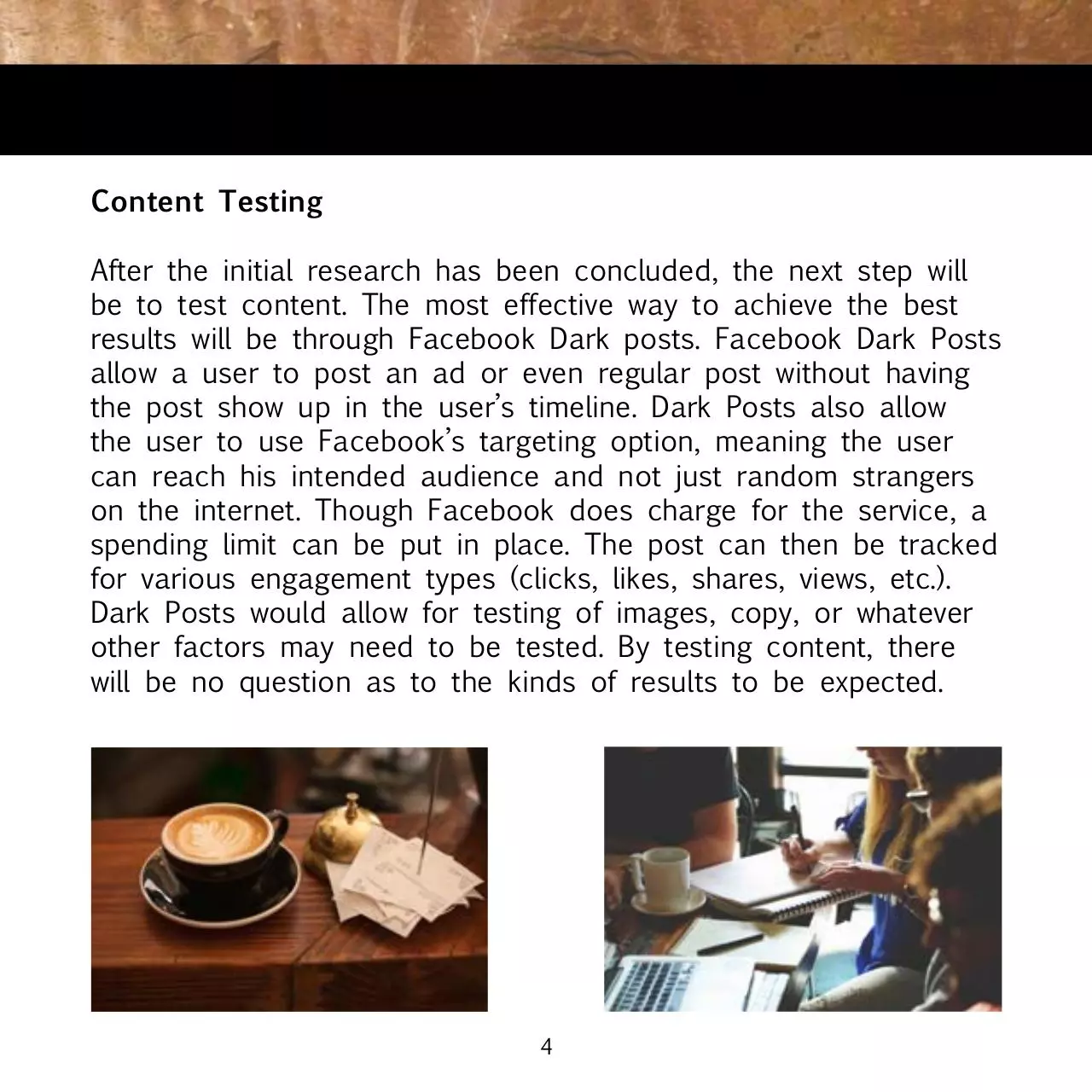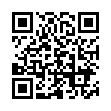Aroma Plan Book Final (1) (PDF)
File information
This PDF 1.7 document has been generated by Adobe InDesign CC 2015 (Macintosh) / Adobe PDF Library 15.0, and has been sent on pdf-archive.com on 26/01/2016 at 05:46, from IP address 67.45.x.x.
The current document download page has been viewed 412 times.
File size: 398.02 KB (20 pages).
Privacy: public file





File preview
Aroma Coffee
Internship Recruitment Plan
Eagle Agency 2016
Eagle Agency 2016
Table of Contents
Phase One
3
Phase Two
7
Phase Three
15
Conclusion
19
Phase One
Research Introduction
For any marketing endeavor, understanding the target market is
vital for success. In terms of reaching out to potential Aroma
interns, the ideal target market would be male and female
college students between the ages of 18-24 who are majoring in
a business related field, own a cellphone, and are interested in
travel. In order to understand Aroma’s target market, research
will be conducted to delve in the lives and minds of potential
interns.
The research goals for this campaign will focus on
learning about what an individual’s motivations for interning at
Aroma would be. Are they interested in business as missions?
Using their business skills in a different country? Ministering and
living in a different country? Or maybe just the opportunity to
live in Taiwan. Another goal would be to learn how our target
market engages with social media. Since social media is likely to
be a large part of this campaign, learning which channels and
what kind of content is most likely to increase engagement is of
high importance. Once these two goals are met, the likelihood
that of presenting the target market with relevant content will
increase and give us a solid foundation to build an effective
campaign.
3
Content Testing
After the initial research has been concluded, the next step will
be to test content. The most effective way to achieve the best
results will be through Facebook Dark posts. Facebook Dark Posts
allow a user to post an ad or even regular post without having
the post show up in the user’s timeline. Dark Posts also allow
the user to use Facebook’s targeting option, meaning the user
can reach his intended audience and not just random strangers
on the internet. Though Facebook does charge for the service, a
spending limit can be put in place. The post can then be tracked
for various engagement types (clicks, likes, shares, views, etc.).
Dark Posts would allow for testing of images, copy, or whatever
other factors may need to be tested. By testing content, there
will be no question as to the kinds of results to be expected.
4
Surveys and Focus Groups
The two most prominent research methods for this campaign will
be surveys and focus groups. These two methods will allow for
the collection of both quantitative and qualitative data. Surveys
will be dispersed through various at colleges such as Simpson,
Tacoa Falls, and Crown. Collecting data from schools across the
nation will lead to different perspectives based on different
geographic locations. The data that will be collected from surveys
will focus on both a student’s motivations and the social media
engagement. The desired number of respondents for the surveys
will be between 300-400 respondents.
Focus groups will focus more on qualitative rather than
quantitative. The focus groups will be conducted at
Crown College. The participants will include students from Crown
and college and students from Tacoa and Simpson will be
included through Google Hangouts or GoToMeeting. Conducting
these focus groups will allow us to learn more about how these
students engage with our message and our delivery strategies.
5
Possible Survey Questions:
1.
2.
3.
4.
5.
6.
7.
8.
What is your gender?
What social media sites do you use most often?
What school do you go to?
What year in school are you?
What is your major?
Have you ever had an internship before?
Why do you want to get an internship?
What are some skills you would hope to gain
from an internship?
9. What potentially interests you about an international
internship?
10. How often do you check your email?
11. Is an email newsletter an effective way to
reach you personally?
6
Phase Two
Content Creation and Implementation
After Phase 1, content creation will be much easier. The main
efforts for this campaign will be Facebook and Instagram ads.
The first round will launch at Simpson University, Toccoa Falls,
and Crown colleges. These markets will be the best understood
after research has concluded. If Aroma feels so inclined, these
processes and ads can be scaled to include more schools and
larger audiences. The first round of ads will drive to landing
pages highlighting various aspects of an internship at Aroma.
The landing pages will also include a call to action encouraging
visitors to sign up for an email newsletter. After a certain amount
of time, those who have signed up for the email newsletter will
be retargeted with a different set of ads linking to different
landing pages. This second round of advertising will focus on
asking the student to apply for internship. This strategy will help
potential interns move from having little to no knowledge of
Aroma, to a candidate for an internship.
7
Facebook and Instagram Ads
The main advertising push for this campaign will be Facebook
and Instagram ads. There are a number of reasons for utilizing
these channels. First, Facebook’s targeting allows for precise control over who sees the content. Facebook also allows targeting
through email address, which will be useful when retargeting visitors for second round advertising. Second, Instagram and Facebook ads appear natively in a user’s feed regardless of content
type. This helps increase engagement and conversion rates.
Ads for these channels, including images, copy, or videos, will be
based on research from Phase 1. Delivery times and dates will
also be decided upon during Phase 1.
(See following pages for visuals)
8
Download Aroma Plan Book Final (1)
Aroma Plan Book Final (1).pdf (PDF, 398.02 KB)
Download PDF
Share this file on social networks
Link to this page
Permanent link
Use the permanent link to the download page to share your document on Facebook, Twitter, LinkedIn, or directly with a contact by e-Mail, Messenger, Whatsapp, Line..
Short link
Use the short link to share your document on Twitter or by text message (SMS)
HTML Code
Copy the following HTML code to share your document on a Website or Blog
QR Code to this page

This file has been shared publicly by a user of PDF Archive.
Document ID: 0000335140.